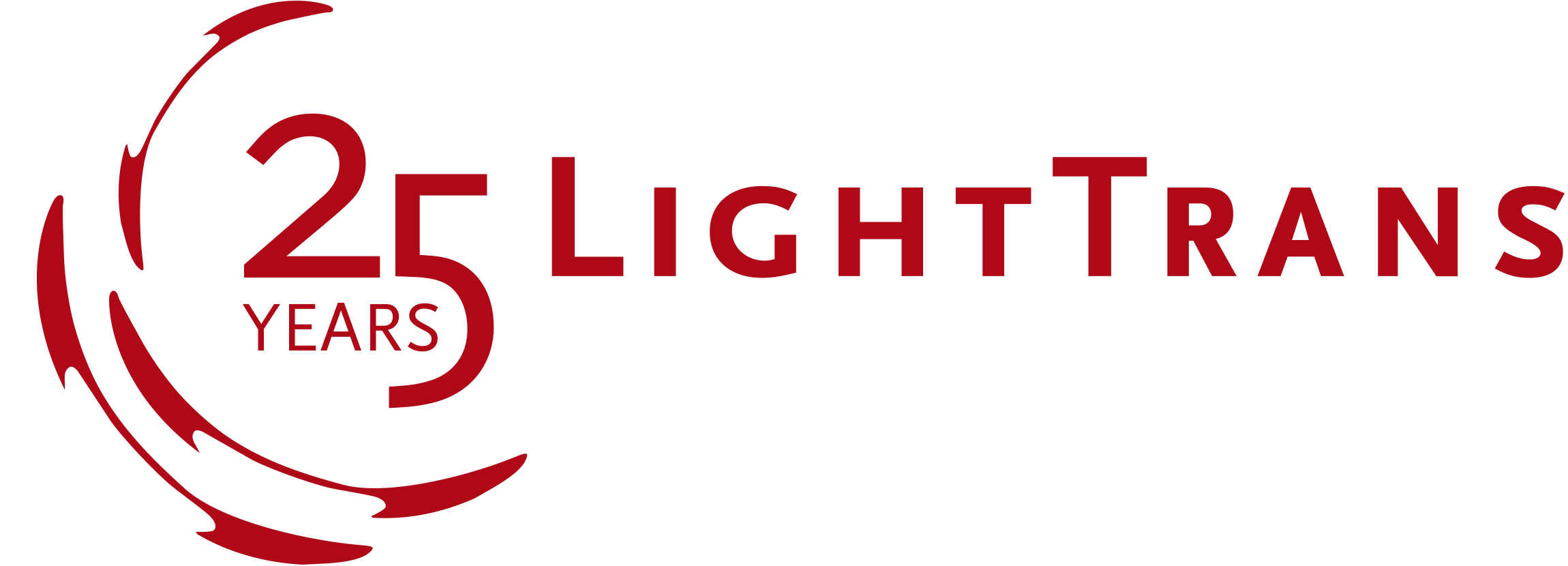What’s new in our Optical Modeling and Design Software?
Grating Analysis for Lightguide Applications
As we saw in last week’s newsletter, grating structures with various shapes are often an essential part of lightguide-based display systems for augmented and mixed reality applications. The complexity of the gratings and the manifold roles they usually play in these setups require a thorough analysis of their behavior, while the small feature size means a rigorous method is necessary to perform said analysis accurately. The fast physical optics modeling and design software VirtualLab Fusion puts several tools at your disposal to make this task easier and more user-friendly.
This time, we want to highlight the Grating Order Analyzer, which uses the rigorous Fourier Modal Method/Rigorous Coupled Wave Analysis (FMM/RCWA) for grating characterization and illustrate its application in the case of a slanted grating for lightguide incoupling.
Read moreRegister for Our Upcoming Webinar & Meet Us at Photonics West!
Webinar
Advanced Modeling of Microlens Arrays with VirtualLab Fusion
23 November 2021 | 10:00 and 18:00 (CET)
Exhibition
SPIE Photonics West
25 – 27 January 2022 | San Francisco, USA
Moscone Centre | German Pavilion A #4429-15
Real Grating Effects in Lightguide Applications
For the purposes of in- and outcoupling light, as well as for guiding the light from a source to the intended eyebox, different kinds of surface relief or even holographic gratings are commonly used. The design of these gratings in regard to efficiency and uniformity is therefore one of the major challenges in the design process of AR/MR devices. VirtualLab Fusion provides the optical designer with a variety of different tools to investigate grating properties and an easy way to apply the designed grating structures onto the lightguide surface. This enables the detailed simulation of the whole device including all relevant effects, like polarization and coherence.
Read moreSave Your Seat for Our New Meetup and Online Training in December!
LightTrans User Meetup
Prepare for 2022 – Ask Us Your Open Questions
01 December 2021 | 10:00 – 17:45 (CET)
Online Training
Modeling Anisotropy and Crystals in VirtualLab Fusion
07 – 08 December 2021 | 08:30 – 12:00 (CET)
Design Tools for Light Guide Layouts with 1D-1D EPE
The design of light-guiding devices for augmented- and mixed-reality applications is famously challenging, due to the total mix-up of angular and spectral modes and a vast number of free parameters in the system, what makes a “brute-force” approach to parametric optimization pretty much an impossibility. The fast physical optics modeling and design software VirtualLab Fusion with its Light Guide Toolbox Gold Edition puts at your disposal several systematic design tools that help the optical engineer tackle the design process step by step and in a more controlled manner. These systematic design tools cover the layout of the device as well as the grating parameters in the coupling and EPE regions.
Here, we focus on two layout-related tools: k-Layout Visualization and Layout Design, applicable for devices with a separable 1D-1D pupil expansion and 1D-periodic grating structures, like Hololens 1. Take a look at the use cases below to learn more about their exciting potential!
Read moreIn- and Outcoupling Regions for Light Guides
A major part in the design of light guides for augmented- and mixed-reality applications are the couplers, in many cases realized as grating regions on the surface of the light guide. VirtualLab Fusion provides an extremely flexible approach for region configuration. When used to define grating regions on light guides, there is yet another level of flexibility, in the form of which orders are to be traced and which method applied to model the grating. For an initial investigation of the system, or for unknown structures, a functional grating model is available. For a fully fledged simulation of the grating we offer the rigorous Fourier Modal Method (FMM/RCWA). The cherry on the cake is a lookup table concept that stores the Rayleigh matrices and uses them in subsequent runs, thus increasing simulation speed.
Go through the use cases below to learn more about these capabilities:
Read moreSimulation of Light Guides for AR & MR Devices
With the advent of new technologies in the area of augmented and mixed reality (AR & MR) optical light guides have grown in popularity. To model and design such structures, VirtualLab Fusion puts at your disposal its powerful Light Guide Toolbox, which allows for the flexible definition of the overall structure and distinct areas for in- and outcouplers. Together with its non-sequential simulation engine, which incorporates all crucial physical effects like polarization, diffraction from apertures and coherence, this provides powerful tools that support the optical engineer in their task to investigate and design a light guide device for AR & MR.
Read moreParametric Optimization
Parametric optimization is an indispensable and important step in optical design. It can help refine and improve the system to ensure that the specifications of the task are fulfilled, and that the desired performance is achieved. The fast physical optics modeling and design software VirtualLab Fusion includes an in-built parametric optimization feature, which of course works on the basis of the different simulation engines available (both ray and field tracing), as required by the design task. The selection of off-the-shelf detectors and analyzers that come with the software provide many of the most common merit functions, with additional customization possible through programming.
Read more











